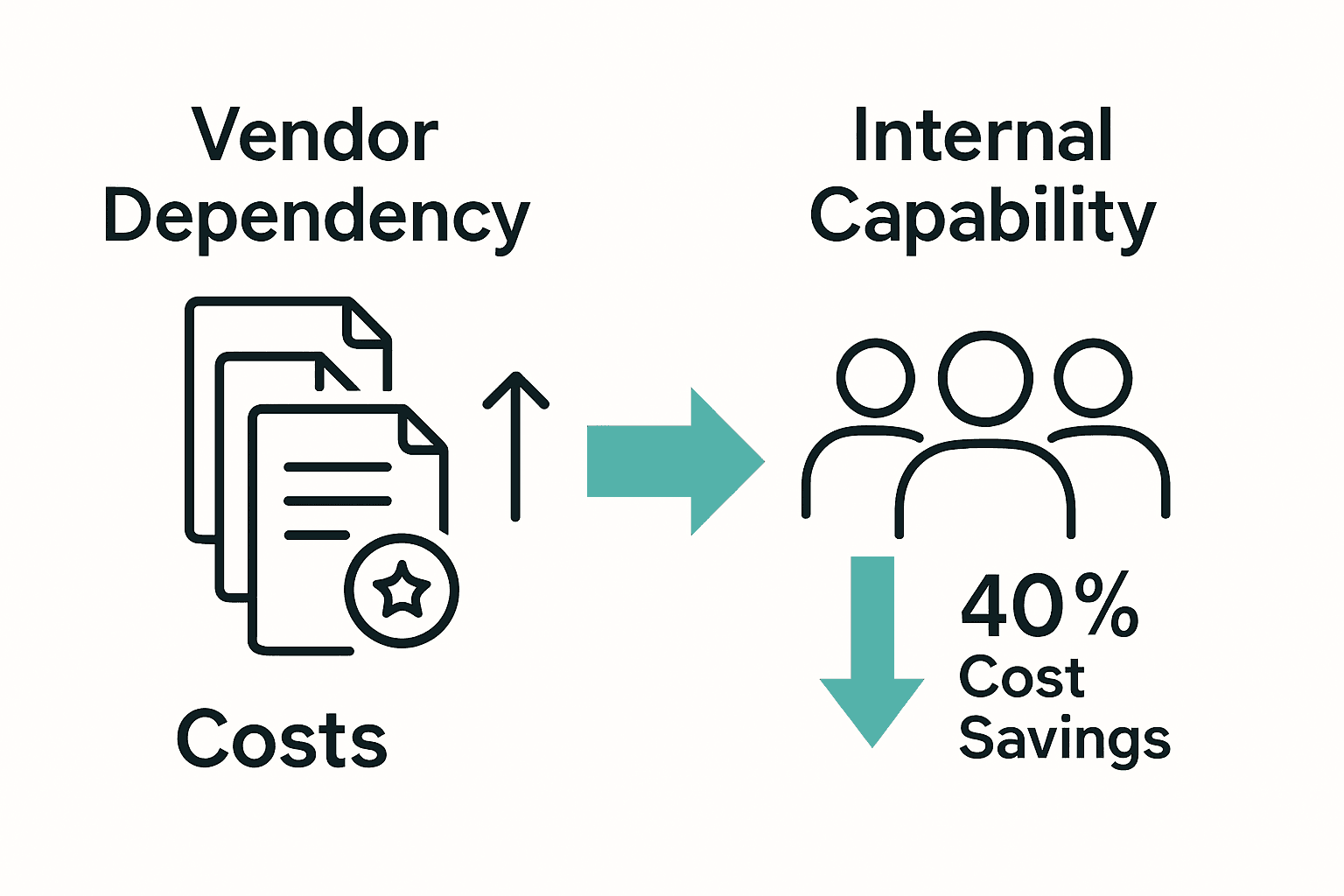Vendor Replacement Framework: Cut Costs 40% Fast

Did you know that nearly 60 percent of companies report vendor sprawl as a key source of wasted spend and inefficiency? Every partner you rely on shapes how smoothly your business runs and how quickly it grows. Understanding how vendor dependencies take root, and why thoughtful replacement matters, can open the door to stronger operations and real savings while freeing your teams to focus on what truly drives results.
Key Takeaways
| Point | Details |
|---|---|
| Strategic Vendor Replacement | Vendor replacement is a comprehensive process focused on breaking dependencies and optimizing business functions, rather than solely aiming for cost reduction. |
| Holistic Evaluation of Vendor Costs | Understanding total cost of ownership is essential, requiring the analysis of both direct and hidden costs associated with vendor relationships. |
| Empowered Internal Capabilities | Building internal capacity through skill development and technology is crucial for reducing reliance on external vendors and fostering sustainable growth. |
| Quick Win Opportunities | Identifying and consolidating frequently used vendor services can yield immediate financial benefits while enhancing operational efficiency. |
Table of Contents
- Defining Vendor Replacement And Dependencies
- Key Vendor Categories To Assess First
- How To Evaluate True Vendor Costs And Risks
- Building Your Prioritization Framework And Checklist
- Real-World Case: Quick Win Vendor Replacements
- Empowering Teams For Sustainable Vendor Independence
Defining Vendor Replacement and Dependencies
Vendor replacement isn’t just switching service providers—it’s a strategic process of breaking organizational dependencies that drain resources and limit business potential. According to IBM’s procurement insights, cost reduction involves more than simply changing suppliers; it requires a holistic approach to understanding how external partnerships impact operational efficiency.
At its core, vendor dependency represents the complex web of external relationships that businesses rely on for critical functions. These dependencies often emerge organically, creating a fragmented ecosystem of service providers that incrementally increase operational complexity and expenses. As Rohmate’s vendor consolidation research explains, vendor sprawl can silently erode profit margins by creating redundant, overlapping service contracts across multiple categories and regions.

Effective vendor replacement requires a systematic approach that goes beyond simple cost-cutting. Key strategies include:
Here’s a summary of key strategies for effective vendor replacement:
| Strategy | Purpose | Example Tactics |
|---|---|---|
| Vendor Relationship Mapping | Identify all external dependencies | Create vendor ecosystem diagrams |
| Interdependency Analysis | Reveal cross-functional linkages | Map shared workflows across teams |
| Value Assessment | Evaluate ROI versus spend | Conduct performance vs. cost reviews |
| Internal Capability Development | Build in-house capacity | Upskill teams Adopt automation tools |
| Transition Planning | Reduce disruption during changeover | Phased migration Risk mitigation |
- Comprehensively mapping existing vendor relationships
- Identifying interdependencies across business functions
- Evaluating true value delivered versus total contract costs
- Developing internal capabilities to reduce external dependencies
- Creating a phased transition plan that minimizes service disruption
The ultimate goal isn’t elimination of vendors, but strategic optimization—transforming external dependencies into scalable, cost-effective internal capabilities that drive sustainable business growth.
Key Vendor Categories to Assess First
When embarking on a vendor replacement strategy, not all external partnerships are created equal. Strategic vendor consolidation begins with identifying the most resource-intensive and financially impactful categories that offer immediate optimization potential. Rohmate’s vendor consolidation research recommends starting with categories characterized by high administrative overhead or service redundancies, particularly in areas like facilities support, where streamlining can yield rapid cost savings.
According to Transport Blog’s procurement strategies, businesses should prioritize top spend categories and map expenditures to identify opportunities for consolidation across 4–6 strategic suppliers. This approach enables organizations to leverage volume discounts and negotiate more favorable contract terms while reducing overall vendor complexity.
Key vendor categories to assess first include:
- Marketing and Creative Services: Multiple agencies, freelancers, and design vendors
- Technology and IT Support: Fragmented software subscriptions, consulting partners
- Operations and Facilities: Maintenance, cleaning, equipment, and support services
- Professional Consulting: Strategy, HR, legal, and financial advisory vendors
- Digital Infrastructure: Hosting, cloud services, development, and implementation partners
The goal is not just cost reduction, but strategic optimization—transforming a scattered vendor landscape into a lean, focused ecosystem of high-value partnerships that directly contribute to your business’s core objectives and growth potential.
How to Evaluate True Vendor Costs and Risks
Understanding the total cost of ownership goes far beyond simply comparing surface-level pricing. Transport Blog’s procurement strategies emphasize a comprehensive approach that incorporates hidden expenses like freight, quality incidents, potential obsolescence, and long-term contract implications that can dramatically impact your bottom line.
Concord’s procurement analysis reveals that modern businesses must leverage advanced techniques to uncover the true financial impact of vendor relationships. This means moving beyond traditional cost assessment to implement spend analysis, automated data visibility, and AI-driven insights that expose maverick spending and potential risk exposures across your entire vendor ecosystem.
Key evaluation strategies include:
- Comprehensive Cost Mapping: Tracking direct and indirect expenses
- Risk Assessment: Evaluating vendor financial stability and performance history
- Total Cost of Ownership (TCO) Analysis: Calculating long-term financial implications
- Performance Benchmarking: Comparing vendor deliverables against industry standards
- Contract Flexibility Evaluation: Assessing terms that impact future scalability
By adopting a holistic approach to vendor cost evaluation, businesses can transform vendor relationships from potential financial burdens into strategic, value-generating partnerships that directly contribute to organizational efficiency and growth.
Building Your Prioritization Framework and Checklist
Developing a strategic vendor replacement framework requires more than good intentions—it demands a structured, data-driven approach. Transport Blog’s procurement strategies outline a systematic process of assess, negotiate, and execute, supported by a dedicated procurement team and comprehensive performance dashboards that track critical metrics like cost-to-serve and automation potential.
Concord’s procurement analysis recommends leveraging advanced tools like category management systems, contract lifecycle management (CLM) platforms, and supplier performance scorecards to build a robust prioritization checklist. This approach enables businesses to methodically track savings opportunities, implementation timelines, and potential performance risks across their entire vendor ecosystem.
Key components of an effective prioritization framework include:
- Financial Impact Assessment: Quantifying total vendor spend and potential savings
- Risk Evaluation: Analyzing vendor stability, performance history, and contractual dependencies
- Replacement Readiness Score: Measuring internal capabilities to absorb vendor functions
- Strategic Alignment: Matching vendor replacement with core business objectives
- Implementation Complexity: Estimating transition costs and potential operational disruptions
Successful vendor replacement is about strategic transformation, not just cost-cutting. By developing a comprehensive, data-driven framework, businesses can systematically reduce external dependencies while building more agile, cost-effective internal capabilities.
Real-World Case: Quick Win Vendor Replacements
In the complex world of vendor management, quick win replacements aren’t about wholesale overnight changes, but strategic, targeted interventions that deliver immediate financial relief. Consider a regional manufacturing company spending $120,000 annually across multiple marketing, design, and content vendors—a typical scenario for businesses in the $40-75M revenue range.
The transformation begins with a comprehensive vendor audit that reveals redundant services and inefficient spending patterns. By consolidating three separate marketing agencies—a digital marketing firm, a branding agency, and a content production team—into a single, AI-enabled internal capability, the company reduced its external spend by 42% while maintaining, and in some cases improving, output quality.
Typical quick win vendor replacement opportunities include:
- Marketing Services: Replacing multiple agencies with AI-powered internal content and design teams
- Technology Consulting: Eliminating fractional CTO and implementation partner contracts
- Creative Services: Bringing graphic design and video production in-house
- Digital Infrastructure: Consolidating cloud service and hosting vendors
- Operations Support: Replacing outsourced administrative and project management functions
The key is not just cost reduction, but capability building. By systematically replacing vendor dependencies with internal, AI-enhanced teams, businesses can transform fixed external costs into scalable, strategic organizational capabilities that drive long-term competitive advantage.
Empowering Teams for Sustainable Vendor Independence
Transitioning from vendor dependency to internal capability requires more than technological tools—it demands a fundamental shift in organizational culture and team empowerment. Concord’s procurement strategies highlight the critical importance of automated workflows, contract lifecycle management (CLM), and performance tracking systems that accelerate team autonomy and reduce manual intervention.
Successful vendor independence isn’t about replacing people, but about creating an environment where internal teams can confidently take ownership of functions previously outsourced. This means investing in skill development, providing robust technological infrastructure, and creating clear performance frameworks that give team members the confidence to innovate and execute at a high level.
Key strategies for team empowerment include:
- Skill Gap Training: Identifying and addressing capabilities needed to replace vendor functions
- AI-Enabled Workflow Design: Creating intuitive systems that support team productivity
- Performance Incentive Redesign: Aligning compensation with successful internal delivery
- Knowledge Transfer Mechanisms: Systematically capturing insights from existing vendor relationships
- Psychological Safety: Building a culture that encourages experimentation and learning
The ultimate goal is transforming external dependencies into internal strengths—turning what was once a cost center managed by vendors into a dynamic, adaptable capability driven by your own talented team members.

Stop Bleeding Money to Vendors: Build Your Own Capabilities and Save $200K-$500K Annually
Are you tired of watching $50K-$150K in monthly agency, consultant, and tech partner fees eat into your profits? The real problem is more than high invoices. It’s the constant dependence on outsiders just to keep your regional business running. Our Vendor Replacement Framework transforms how Midwest and Southeast companies ($40-75M revenue, 75-150 employees) take back control across marketing, operations, creative, tech, and beyond. Imagine cutting your outsourcing costs by 40 percent. Picture turning every wasted consulting bill into something your own people can handle—with AI as silent support, not another pain point.

Ready to see where your big savings are hiding? Book your free Vendor Dependency Assessment now. We will help you map all your external spend and show you specific replacements that typically save $150K-$300K in year one and $400K-$600K+ over time. Fire the consultants and take back what built your business in the first place. Start your journey to vendor independence at Average Robot.
Frequently Asked Questions
What is vendor replacement, and why is it important?
Vendor replacement is the strategic process of breaking organizational dependencies on external service providers to improve operational efficiency and reduce costs. It is crucial because it helps businesses optimize vendor relationships and drive sustainable growth.
How can I identify my company’s vendor dependencies?
You can identify vendor dependencies by creating vendor relationship maps, analyzing interdependencies across business functions, and evaluating the true value delivered versus total contract costs. These steps will help outline areas where redundancies exist.
What are some key categories to focus on when considering vendor replacement?
Key categories to assess include marketing and creative services, technology and IT support, operations and facilities, professional consulting, and digital infrastructure. These areas often have high administrative overhead and present opportunities for immediate optimization.
What strategies can help minimize disruption during vendor transition?
To minimize disruption, create a phased transition plan, conduct risk assessments, establish internal capabilities, and ensure clear communication with your team. This allows for a smoother changeover and helps maintain operational continuity.




